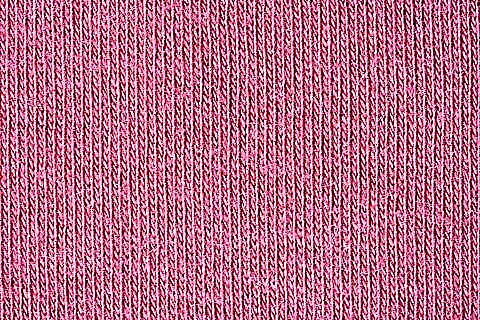For centuries, artists have used a wide variety of objects to turn them into objects of art: whether it be the reuse of canvas (as X-ray shows, almost all masters of the past did this) or the inclusion of found objects in sculpture, such as the creative method of pop artist Robert Rauschenberg, repeatedly using everything from bicycles to live cocks. However, these artists have taken to a whole new level.
10. Autohenge
TripAdvisor's second worst attraction in America (second only to the Toilet Seating Museum in San Antonio, which ironically doesn't have a public toilet), Autohenge is the most famous piece of art on this list. Located in Western Nebraska, this sculpture by Jim Reynders is made from 38 cars, composed in the shape of England's famous Stonehenge stone monoliths. Future generations will surely think it has something to do with the annual movement of the sun.
9. People and animals from plastic debris
Anyone with children knows that plastic toys don't last long. However, even after going to the landfill, the broken pieces exist for tens, even hundreds of years. Robert Bradford transforms toy wrecks into playful, colorful pieces of art. His life-size (and sometimes even larger) sculptures of animals, people and buildings are made from discarded plastic objects, such as toys, brushes, combs and much more. Bradford's creations are truly immortal, unlike, we all hope, garbage dumps.
8. Portraits from the found trash
Originally a fabric artist, Jane Perkins switched to reclaimed plastics. She draws inspiration for her hilarious, colorful creations from the items found in the trash can. She takes a large photograph or drawing as a base and then colorizes and attaches buttons, beans and other debris to them, creating three-dimensional versions of classics such as Mona Lisa and the Girl with a Pearl Earring, or portraits of celebrities such as Queen Elizabeth II of England and President Barack Obama. Her work is inspired by bowerbirds who transform their nests into works of art from seashells, shards of glass, stones and plastic debris.
7. Angels from weapons
In the 1990s, at a time of violence in Los Angeles, artist Lin Evola (then Evola-Smidt) came up with a creative solution. She convinced the people of LA to abandon her weapons, which were melted down and used to create angel statues. Starting with small projects, Evola increased the size of sculptures for installation in city parks. Her nine-meter statue, the Renaissance Angel of Peace, was erected at the site of the 9/11 attacks. Since then, she has thought about a global version of her project, which will reduce the "proliferation of small firearms, light artillery and other types of weapons." Isn't that a great idea?
6. Realistic animals made from recycled plastic
The "restored creations" of the artist Sayaka Gantz are so exquisite that it is hard to believe that someone has thrown away the things they are made of. Crafted from recycled plastic, these amazing pieces are inspired by the Shinto belief that everything has a soul. She claims that she strives to help each object overcome its origin by being integrated into an organic form, "living and moving." And at the sight of one of her horse sculptures galloping around the gallery, it seems that she has achieved her goal.
5. Portraits of celebrities from tape
Self-taught artist Erica Iris Simmons took a postmodern approach to pop art, basing her work on the concepts of data and memory. But no matter if that statement makes sense to you, her striking portraits of famous musicians - made from swirls of cassette tapes - will blow your mind. Describing her series of portraits, Ghosts in the Car, she writes: "I think we are all like cassettes - we keep our thoughts rolled up in awkward packaging." Her gift is to find elegant beauty inside such packages.
4. Complex abstract sculptures from books
Have books become archaic in the days of digital publishing? Artist Brian Dettmer does his best to make the books remember: if not for their intended purpose, then through his figurative sculptures. He starts by sealing the edges of the book in order to achieve stability. Then, using knives, tweezers and other instruments of the surgeon, he begins to create. Layer by layer, page by page, he creates images, sometimes representative (gear or building), but more often abstract and always like a dream.
3. Fantastic food landscapes
From a young age, painting to music in his room, Karl Warner created his own universes, inspired by the reproductions of Salvador Dali, Patrick Woodroffe and the albums of Roger Dean. The bizarre imaginary landscapes of those years turned into miniature "food landscapes" made with pins and superglue.
Edible sculptures do not last long, but thanks to Warner's other love - photography - he perpetuates every stunning miracle. Kids and adults alike will enjoy viewing his work and finding out what they are made of, from lentil gravel to real onion cathedrals.
2. Intricate leaves made from human hair
Textile artist Jenin Shereos - for example, creating lace that looks like wood shade - makes intricate leaves by twisting, sewing and tying human hair with a water-soluble material.
When it dissolves and rinses off the base, the result remains the same as the veins of a real fallen leaf. Shereos calls the painstaking process of creating them "meditative", and it is easy to imagine that each sheet is filled with thoughts that visited her mind during her work.
1. Shadow sculptures from debris
At first glance, they look like heaps of garbage, but you will be amazed at what happens if you shine a light on them. Sculptors Tim Noble and Sue Webster collect scraps like scrap metal and debris into sculptures that take on a new lease of life when shined with a beam of light at the right angle. The shadow of a heap of rubbish or scrap metal transforms into the silhouette of a detailed portrait. After their work, the garbage will never be the same for you.
We recommend watching:
This English creator creates incredible works of art using ordinary rubbish as material for this:



